FINAL PIECE: PETRI DISH ARTWORK: The Real and the Not Real…
Posted: December 4, 2013 Filed under: Contextualisation, Documentation, Subject | Tags: 3D piece, Art, artist, artistic, Artwork, Decay, documentation, fake mould, Fine Art, juxtaposition, Mold, Mould, mouly, Petri dish, petri dishes, real mould, Scientific, sculpture, Vija Celmins, visual art Leave a commentThe initial inspiration for this final piece using petri dishes to create an art piece was a mug I forgot about that still have some tea in it. After I eventually remembered about it the bottom had started to mould and reminded me of how a sample in a petri dish sometimes looks. I instantly thought about the more scientific side to things decaying and started to work on how I could incorporate Petri Dishes into an art piece. Below is an image of the mug that inspired this thought.
I immediately got hold of some petri dishes and started filling them with things that would decay over time, like bread, milk, yoghurt, tea, juice and combinations of two or more of these ingredients. I wanted to see how they moulded in a dish with little air and different conditions to how I have moulded things before. At this point, I was not really sure how I was going to use these pieces to create an art piece but I was confident that eventually I would. Below are images of some of the petri dishes before and after they have started to mould. Some of them have become very interesting objects and will continue changing over time but I did not feel that displaying these objects alone as art was enough.
I decided to paint the inside of some more petri dishes with fake mould to create a juxtaposition between the real and the not real. This idea was inspired by Vija Celmins “to fix the image in memory” which plays with post perspective by asking what is real? In this work, there are two rocks, one is real and one is an imitation. There is the same principle as a hall of mirrors. This undoes the notion of realistic artwork because we have no idea which one is art.

To fix the image in memory series – Vija Celmin
Creating real and fake moulding petri dishes and displaying them altogether does make the viewer ask themselves which ones are art? Are they all art, as one piece? Are the petri dishes miniature paintings or symbols of decay? that is up to you. By doing this, I have tried to show a juxtaposition between things changing over time (real mould) and preserving time or capturing a moment in the decay process (fake mould). Interesting things are happening when displaying these two notions together. In my opinion the piece that I have created from petri dishes is one of my most successful.
The juxtaposition between the real and the fake within decay is something I have explored over and over throughout the project and I feel that this piece sums up my findings accurately which is why I chose to display it as a final outcome. Also, it almost bridges a gap between science and art and I like how it looks aesthetically. It will be interesting to see how the real Petri dishes mould over time and how they look in relation to the ones I have painted. It is interesting that this final piece will continue to decay.
Artist relevant to my work: ELLEN ALTFEST
Posted: December 2, 2013 Filed under: Contextualisation, Subject | Tags: Art, artist, artistic inspiration, Decay, Ellen Altfest, Fine Art, inspiration, Mold, Mould, paint, visual art, Woodblock printing Leave a commentELLEN ALTFEST – American Artist (Born 1970)
“With exquisite attention to the minutest details, Ellen Altfest produces naturalistic paintings that transform humble or intimate subjects—like houseplants, gourds, rotting items or a man’s underarm—into evocative, psychologically loaded objects that almost exceed realism”. American artist Ellen Altfest exploits the full potential of green in many of her paintings, as you can see in this nuanced image, here to create the image of moulding or decay.
When I first saw these two pieces, I thought they were paintings but they are infact woodblock prints. She has managed to make them look so textural without them actually being textural. The works accurately captures the decay of the object but are also beautiful pieces. This is a challenging element to achieve.

Green Gourd, 2007 – 18 colour woodblock print on Japan MM7 Kozo paper
Ellen’s work inspires me to think about textures when creating works to do with mould and decay and to think about how varied the colour palette of mould actually is. In my opinion, Ellen Altfest’s moulding food paintings are beautiful. They capture exactly what most of us take for granted and make something normally considered repulsive have a sense of beauty and therefore she is highly relevant to my project on decay.
Drawing Workshop: Anthropomorphasis
Posted: December 1, 2013 Filed under: Contextualisation, Documentation, Subject | Tags: Art, Artists, Artwork, charcoal, Color, draw, Drawing, Fine Art, Graham Sutherland, Henri Matisse, inspiration, Model (art), Oil pastel, Plant, Visual Arts, Workshop Leave a commentIn this drawing workshop, I was encouraged to experiment with anthropomorphism. Anthropomorphism is the attribution of human form or other characteristics to anything other than a human being. In this case, we were looking at the attribution of human motivation with plant life and natural phenomena. As well as the relation between the plants and the model, we looked at relief work and experimenting with cutting paper out and sticking it onto our drawings to make a much more free image and shape than just the rectangle of the paper we were given. There were a few initial artistic inspirations that were considered before creating the outcome. This workshop was from life so a life model surrounded by plant life was present. The artists that stood out to me to inspire my piece were Henri Matisse, Graham Sutherland, Ruth Daniels and Georgia O’Keeffe.
HENRI MATISSE
Henri Matisse favoured drawing from life. It is interesting to look at his piece below because the plants almost seem more important in the composition than the figure does. I am drawn in by the loose handling used to render the leaves and the fact that the leaves are varied in size and shape. To me, the plants are a far more interesting subject to look at within this painting and I don’t immediately notice that she is there. This inspired me to think about displaying the figure or face of a human woman amongst the foliage around her. Matisse’s work inspired me to use a bright colour palette and to not be too controlled in my approach. This piece also gave me an insight into how the plants and the model can come together to make a successful artwork.
GRAHAM SUTHERLAND
Graham Sutherland’s piece “Bamboo forest“ showed me how I could approach drawing and incorporating an expressive element into my piece. I like the limited colour palette in this work and it inspired me to fill the page and cram lots of plant imagery together. Here he has portrayed the plants dominating the figure and there is a sense that the figure is intimidated by all the foliage. I wanted the figure and plants to be harmonious together in my work so in a way Sutherland’s work showed me how to do that by showing the how not to do it.
RUTH DANIELS and GEORGIA O’KEEFFE
The Bright colours in the work of these two artists were highly inspirational to me, they influenced me to use iridescent colouring within my own work and think about placing colours together to make a more striking effect. The Blending of colours was something that caught my eye here aswell which inspired me to be tonal in my work rather than thinking about the use of block colour.
MY ANTHROMORPHIC ARTWORK
Above is an image of the piece I produced within this workshop. I am fairly happy with how it turned out and the model and the plant life have definitely come together as one. The bright colour palette and leaves remind me of a carnival atmosphere. I think the fact that the shape of the piece is irregular adds to its success, it would not be as interesting to look at if it was simply rectangular. To create this piece I have used a variety of medias including charcoal, oil pastels, paint, ink and chalk pastel. I think leaving some of the piece white was definitely a wise decision as it heightens and accentuates the bold colouring of the piece. I found it quite difficult to decide which bits of the life model and plants that I was looking at to include in my work and struggled at first to be selective. This workshop taught me that you do not have to draw all of what you see for the image to be successful and that you can combine two or more completely separate subject matters relatively simply.
DANIELE DEL NERO: HIGHLY INSPIRATIONAL DECAYING BUILDINGS
Posted: November 25, 2013 Filed under: Contextualisation, Subject | Tags: 3d, amazing, Architecture, Art, Artwork, Buildings, Conceptual, Daniele del nero, Decay, Eery, Fine Art, Flour, Food, Haunted House, models, Mold, Mould, moulding, Photograph, sculpture, visual art Leave a commentWhilst exploring decay as an art from across the internet, I came across an article (link below) entitled “ARTIST USES MOULD TO CREATE DECAYED ARCHITECTURAL MODELS” and was obviously instantly interested.
http://www.wired.co.uk/news/archive/2010-11/30/mould-art
Artist Daniele Del Nero creates architectural scale models of buildings and then dampens the exterior of the structure and applies a thin dusting of flour. The model is then placed into a transparent case, which relates to my moulding perspex boxes. Mould starts to grow after a couple of days and dies within two weeks, leaving behind what the artist has described as “a dusty spider-web which covers the model like a rambler plant“.
Like me with my actual moulding artwork , He avoids having direct contact with the mould, removing the cover over the models only to photograph them. He has also related Food Decay to the Decay of the world in a way like I have. This is highly related to me using mould to show pollution and climate change in my factory piece. I have mentioned in my reflective journal a few times about how mould and decay can relate to the end of the world or its breakdown, I appear to have found an artist that feels the same way. He states “We are used to imagining our cities as permanent and definitive, but it’s amazing how little time it takes for nature to reclaim its spaces.”
These works are AMAZING, they are definitely my favourite works out of all the other artists I’ve come across that use mould to create art. The photographs are beautiful as well as the pieces themselves. His work encourages me experiment with getting a more professional photo of my perspex boxes and other moulding objects as I don’t feel these would look as successful without the high level of photography and dark background. There is something very eery about these pieces, but I absolutely love them. Daniele Del Nero’s work is without a doubt a success. He wanted to “reproduce in small-scale the particular sensation of being in a lonely, abandoned place” and I feel he has without a doubt achieved this. He is a massive inspiration to me right now and his work definitely makes me want to experiment with creating 3D works and to use mould to create a certain feeling or atmosphere.
Key Artwork: Natura Morta Series : Giorgio Morandi 1890-1964
Posted: November 25, 2013 Filed under: Contextualisation, Subject | Tags: Abstraction, Art, Art history, artist, Artwork, composition, engraving, Fine Art, Giorgio Morandi, Hatching, Itaian Artist, Morandi, Natura Morta, painting, Still life, traditional Leave a comment“There’s little or nothing new in the world, What matters is the new and different position in which artists find themselves seeing and considering” – Giorgio Morandi
Giorgio Morandi is an Italian painter. He was highly inspired by Paul Cezanne’s still life paintings and limited use of colour. Cezanne was Morandi’s Ideal, He based his work on his influence and later went on to become a professor of engraving.
Morandi produced a large series of Still life artworks called “Natura Morta”. They convey abstract notions and are composed out of what look like very ordinary things. The pieces are very small-scale and there are lots of space around the objects within the composition, the objects are usually grouped together. The colour in his works is very muted in tone and restrictive. They are passive but not passive and for still life’s they are not always that still. He has created 1350 Natura Mortas and has reused imagery. He uses bottles and boxes that re-occur in a number of his pieces, jostling for space on the canvas. Sometimes little huddles of objects appear to present human relationships because of the way they relate to each other within the composition. Are they a metaphor for Human Relationships? They could be poems in paint or trying to portray distilled quietness. There is an amazing colour range within his works but the colours are very dampened down.
Morandi was also influenced by Ben Nicholson, Wayne Teabold and Paul Coldwell. There is a great amount of compression of space within his still lifes and sometimes it is as if we are at eye level with the objects or on top of the table they are on. Throughout Natura Morta the objects are viewed from different angles. Sometimes the shadows spread across significant areas of the painting and are facing different directions as if there were different sources of light.
Giorgio Morandi also produced engravings that demonstrated a very fine cross-hatching technique, but retained the same compositional style as the painted Natura Morta where the objects are fighting for space.
He created a whole series of paintings where he completely blanks out some of the objects within the works, creating negative space. Nearing the end of his life, Morandi produced a series of very economical watercolours which are “barely whispers” of his paintings. Within them there are dense groupings of abstract forms but they are delicate and convey exactly what he sees.
Morandi spent his life drawing and painting what he saw. I have learnt from his work, that going back and drawing what you see can help you to move on and create something interesting. Ideas do not have to be huge, they could just be another way of looking at things. “I don’t know what I’m doing but maybe I could just do that”.
Mould can Damage Artwork as Well as Create It! – Leonardo Da Vinci, Self Portrait
Posted: November 24, 2013 Filed under: Contextualisation, Subject | Tags: Art, art master, artist, artistic genius, Contextualisation, Decay, Drawing, Fine Art, foxing, Leonardo Da Vinci, Mold, Mould, Mould Damage, moulding, Old, Red chalk, restore, rot, rotting, visual art Leave a commentLeonardo Da Vinci’s self-portrait is a prime example of how mould can damage artwork. As stated in an article written by the daily mail (link above), art experts fear that its days on show are numbered as its exposure to the elements on one of those occasions has left it covered in mould and what they call “foxing” and in too poor a condition to restore.
Here we have a strong juxtaposition between the idea that mould can create art but also damage and eventually destroy it. This is a concept that I could work with to create artwork by drawing something and covering it some kind of food material that will grow mould and therefore damage it. I could also combine paint with food items in a piece to give the impression that mould was damaging artwork but it would actually be creating it. It is a shame that one of the works from a great master such as Da Vinci is decaying over time but it is also very influential to my work and encourages to think about using this juxtaposition to create art within my project.
INSPIRATION FROM A TRIP TO LONDON – ANYA GALLACCIO
Posted: November 23, 2013 Filed under: Contextualisation, Subject | Tags: Anya Gallaccio, Art, artist, Artwork, Cincept, Conceptual, Contextualisation, Decay, Fine Art, London, Mould, Tate, Tate Modern, visual art Leave a commentWhilst wandering around London, I went to look at a large variety of artworks and objects in a variety of Galleries and Settings. These included: The Royal College of Art: Australia Exhibition, The Hunterian Museum, The Tate Modern and The Tate Britain. However, It was in the Tate Modern, that I came across the work of Anya Gallaccio. As soon as I saw her piece “preserve beauty”, the connection between her work and mine was obvious. It was only after researching her work that I found out how influential she really was. Gallaccio is known for her work with organic materials such as ice, flowers, fruits and sugar. Her installations often change over time as they melt, decompose or sprout new life.
In her piece “preserve beauty” 2000 gerberas are sandwiched between huge panes of glass and left to decay over time in the gallery. Shown below is an image of how the piece looked when it was first displayed. After researching this piece I discovered that this piece is a metaphor for her own perception of the male-dominated art scene that she feels faces us today.
Shown Below, is an image of how the artwork looked when I visited the Tate Modern.You could smell the decay of this piece when you walked into where it was displayed.
Anya’s work gave me confidence in my own, because I viewed her work as an inspirational art piece rather than just some rotting flowers which is what I want to capture with mould and Food Decay. I know that if I saw a rotting flower in a vase I would never be as impressed but because they are displayed as art and have a concept behind them, they are. I did think that the piece had a certain beauty to it and encouraged me to continue making work changing the perception of something that may usually be considered repulsive. This also made me realise how closely decay relates to death which could be a new concept to work with in the future of my investigation into food decay. I feel Gallaccio’s work is a real triumph and I look forward to seeing what she creates next.
Keith Arnatt – Art that we take for Granted
Posted: November 21, 2013 Filed under: Contextualisation, Subject | Tags: Art, Conceptual art, Contextualisation, Decay, Fine Art, Keith Arnatt, Mould, Photograph, Photography Leave a comment“Pictures from a Rubbish Tip” by Keith Arnatt includes photographs of moulding foods that people have thrown away. The wastage of food here is an interesting concept. Keith Arnatt makes things that usually are horrid, normal and plain or maybe not even considered interesting and photographs it as if it is art. This is of highly relevance to my project. Below is a photograph of a discarded loaf of mouldy bread taken by Keith Arnatt.
His attention to detail in his photography is remarkable and he turns things that are commonly taken for granted like the growth of mould and its beauty into art. His work is inspirational to my project and encourages me to create mouldy artworks to almost force people to look at them so the idea of decaying over time and the mould produced is no longer just overlooked and thrown away. Obviously, you are not going to keep food items if they’ve gone mouldy because they look nice, or are interesting. But in the right environment, mould and decay shouldn’t be considered as it is, repulsive and almost useless. I believe anything can be made into an artwork. ITS NOT THE MATERIALS YOU’RE WORKING WITH, IT’S WHAT YOU DO WITH THEM.













































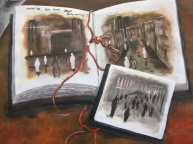

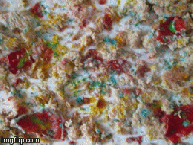
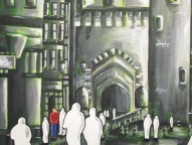


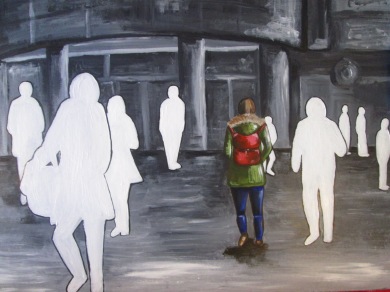
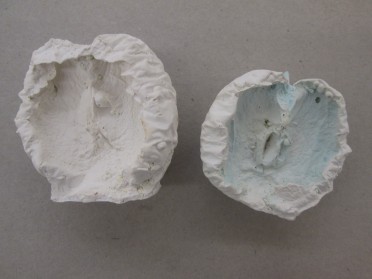







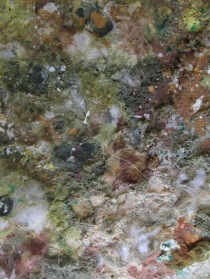
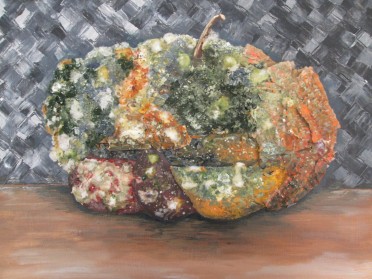
Recent Comments